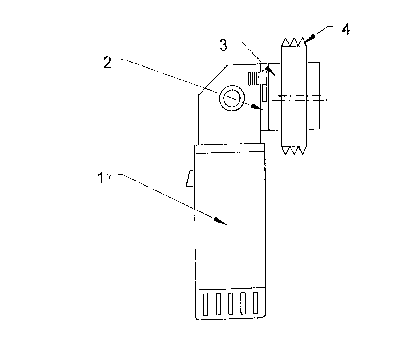Some of the information on this Web page has been provided by external sources. The Government of Canada is not responsible for the accuracy, reliability or currency of the information supplied by external sources. Users wishing to rely upon this information should consult directly with the source of the information. Content provided by external sources is not subject to official languages, privacy and accessibility requirements.
Any discrepancies in the text and image of the Claims and Abstract are due to differing posting times. Text of the Claims and Abstract are posted:
| (12) Patent Application: | (11) CA 2245148 |
|---|---|
| (54) English Title: | COMBINATION OF CONVENTIONAL OR SUPERIMPOSED PERCUSSIVE SLOT-CUTTING TOOLS |
| (54) French Title: | COMBINAISON D'OUTILS A PERCUSSION CLASSIQUES OU SUPERPOSES POUR DECOUPER DES FENTES |
| Status: | Deemed Abandoned and Beyond the Period of Reinstatement - Pending Response to Notice of Disregarded Communication |
| (51) International Patent Classification (IPC): |
|
|---|---|
| (72) Inventors : |
|
| (73) Owners : |
|
| (71) Applicants : |
|
| (74) Agent: | BERESKIN & PARR LLP/S.E.N.C.R.L.,S.R.L. |
| (74) Associate agent: | |
| (45) Issued: | |
| (22) Filed Date: | 1998-08-18 |
| (41) Open to Public Inspection: | 1999-02-18 |
| Availability of licence: | N/A |
| Dedicated to the Public: | N/A |
| (25) Language of filing: | English |
| Patent Cooperation Treaty (PCT): | No |
|---|
| (30) Application Priority Data: | ||||||
|---|---|---|---|---|---|---|
|
A combination of conventional or superimposed percussive slot-cutting
tools for creating slots and grooves, with eccentric,
superimposed percussive, counterbalanced planar milling tools
for excavating floors, walls, rocks, minerals and the like.
Combinaison d'outils à percussion classiques ou superposés pour découper des fentes et des rainures avec des outils de travail à plat à percussion, excentriques et équilibrés, pour exécuter des excavations dans des planchers, des murs, des roches, autres minéraux et matériaux du genre.
Note: Claims are shown in the official language in which they were submitted.
Note: Descriptions are shown in the official language in which they were submitted.

2024-08-01:As part of the Next Generation Patents (NGP) transition, the Canadian Patents Database (CPD) now contains a more detailed Event History, which replicates the Event Log of our new back-office solution.
Please note that "Inactive:" events refers to events no longer in use in our new back-office solution.
For a clearer understanding of the status of the application/patent presented on this page, the site Disclaimer , as well as the definitions for Patent , Event History , Maintenance Fee and Payment History should be consulted.
| Description | Date |
|---|---|
| Inactive: IPC from MCD | 2006-03-12 |
| Inactive: IPC from MCD | 2006-03-12 |
| Inactive: IPC from MCD | 2006-03-12 |
| Inactive: IPC from MCD | 2006-03-12 |
| Time Limit for Reversal Expired | 2004-08-18 |
| Application Not Reinstated by Deadline | 2004-08-18 |
| Deemed Abandoned - Failure to Respond to Maintenance Fee Notice | 2003-08-18 |
| Inactive: Abandon-RFE+Late fee unpaid-Correspondence sent | 2003-08-18 |
| Inactive: Entity size changed | 2002-08-26 |
| Letter Sent | 1999-12-06 |
| Inactive: Single transfer | 1999-11-18 |
| Application Published (Open to Public Inspection) | 1999-02-18 |
| Inactive: Correspondence - Formalities | 1998-11-18 |
| Inactive: IPC assigned | 1998-11-04 |
| Classification Modified | 1998-11-04 |
| Inactive: IPC assigned | 1998-11-04 |
| Inactive: First IPC assigned | 1998-11-04 |
| Inactive: Filing certificate - No RFE (English) | 1998-10-07 |
| Application Received - Regular National | 1998-10-06 |
| Abandonment Date | Reason | Reinstatement Date |
|---|---|---|
| 2003-08-18 |
The last payment was received on 2002-08-07
Note : If the full payment has not been received on or before the date indicated, a further fee may be required which may be one of the following
Patent fees are adjusted on the 1st of January every year. The amounts above are the current amounts if received by December 31 of the current year.
Please refer to the CIPO
Patent Fees
web page to see all current fee amounts.
| Fee Type | Anniversary Year | Due Date | Paid Date |
|---|---|---|---|
| Application fee - small | 1998-08-18 | ||
| Registration of a document | 1999-11-18 | ||
| MF (application, 2nd anniv.) - small | 02 | 2000-08-18 | 2000-08-09 |
| MF (application, 3rd anniv.) - small | 03 | 2001-08-20 | 2001-07-31 |
| MF (application, 4th anniv.) - standard | 04 | 2002-08-19 | 2002-08-07 |
Note: Records showing the ownership history in alphabetical order.
| Current Owners on Record |
|---|
| HANNELORE BECHEM |
| BECHEM, HANNELORE |
| Past Owners on Record |
|---|
| KLAUS BECHEM |
| PHILIP BECHEM |
| ULRICH BECHEM |